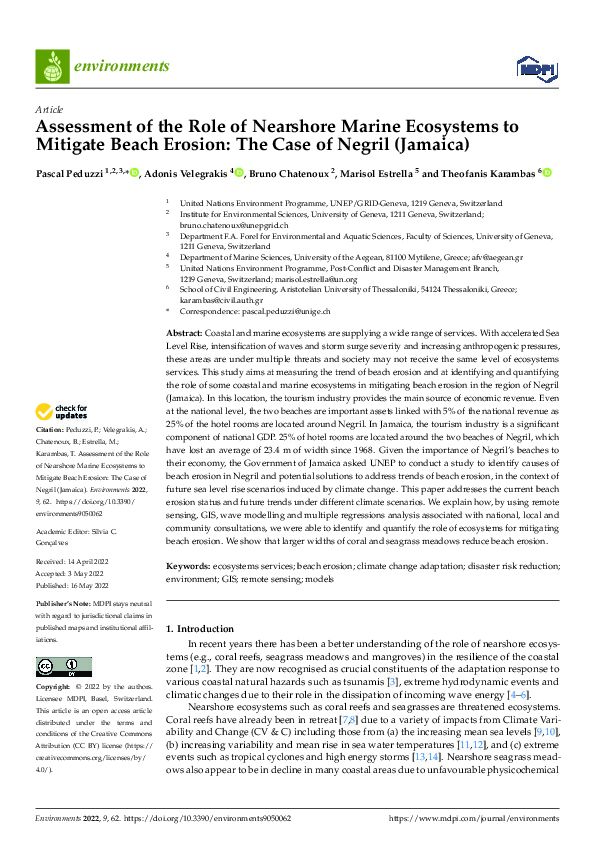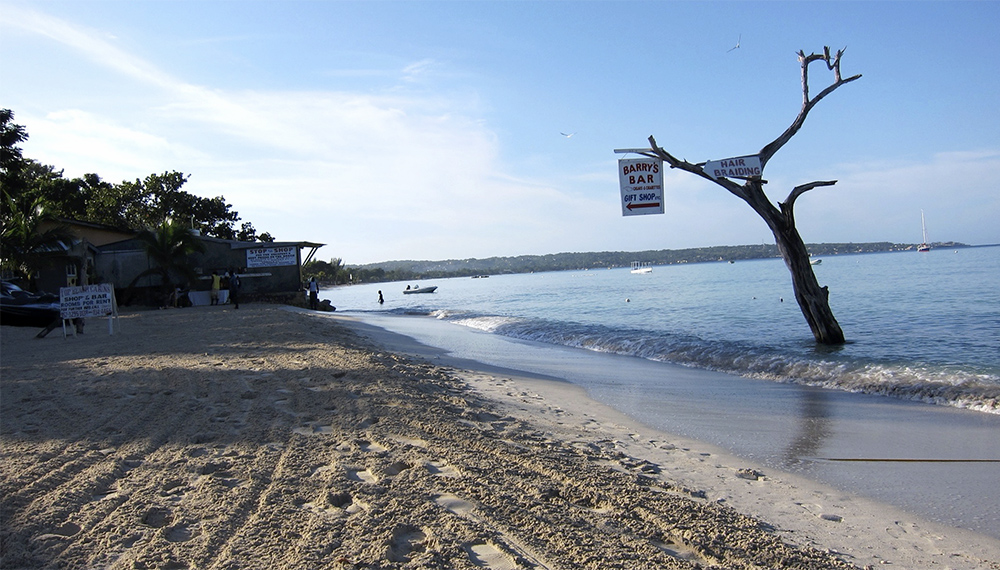Assessment of the Role of Nearshore Marine Ecosystems to Mitigate Beach Erosion: The Case of Negril (Jamaica)
Description
Coastal and marine ecosystems are supplying a wide range of services. With accelerated Sea Level Rise, intensification of waves and storm surge severity and increasing anthropogenic pressures, these areas are under multiple threats and society may not receive the same level of ecosystems services. This study aims at measuring the trend of beach erosion and at identifying and quantifying the role of some coastal and marine ecosystems in mitigating beach erosion in the region of Negril (Jamaica). In this location, the tourism industry provides the main source of economic revenue. Even at the national level, the two beaches are important assets linked with 5% of the national revenue as 25% of the hotel rooms are located around Negril. In Jamaica, the tourism industry is a significant component of national GDP. 25% of hotel rooms are located around the two beaches of Negril, which have lost an average of 23.4 m of width since 1968. Given the importance of Negril’s beaches to their economy, the Government of Jamaica asked UNEP to conduct a study to identify causes of beach erosion in Negril and potential solutions to address trends of beach erosion, in the context of future sea level rise scenarios induced by climate change. This paper addresses the current beach erosion status and future trends under different climate scenarios. We explain how, by using remote sensing, GIS, wave modelling and multiple regressions analysis associated with national, local and community consultations, we were able to identify and quantify the role of ecosystems for mitigating beach erosion. We show that larger widths of coral and seagrass meadows reduce beach erosion.

